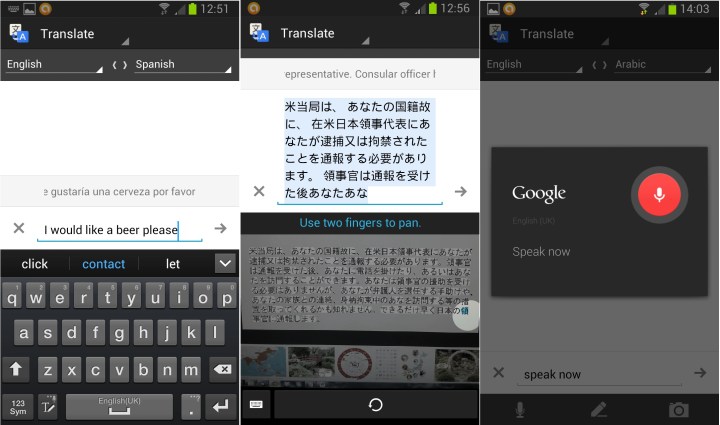
According to a New York Times report Sunday, the app, which has improved markedly in the last couple of years, is about to take a significant step forward with functionality that’ll allow it to convert speech to text instantly. The Times says the update will allow the software to “automatically recognize if someone is speaking a popular language and automatically turn it into written text.”
The Web giant’s app can currently handle voice-to-speech translations for a number of popular languages, though a delay in converting the words means that in a conversational context involving, say, a customer and a store assistant, the communication process is anything but natural.
The Times says the update will be coming “soon” to Google Translate, though fails to be more specific.
Skype Translator
The expected move by the Mountain View company comes a month after Microsoft launched a preview version of its Skype almost-instant translation tool.
Several thousand people are currently taking the new Skype feature for a spin, with some 40,000 others waiting to join the test program.
The tool lets two people who speak different languages engage in a real-time conversation, with the instantly translated words appearing as flowing text down the side of the screen.
The software relies on machine learning, so the more you use it, the cleverer it should become at understanding precisely what’s being spoken.
Skype’s translation tool currently only works between Spanish and English for the spoken word, however, the developers are working to introduce as many languages as possible over time.
While the new features from both Google and Microsoft sound promising, it’s still a huge challenge for tools like these to consistently and accurately recognize input speech, as well as to produce a reliable and meaningful translation, though for sure they’re edging in the right direction.
If you’re one of the few currently engaged in putting Skype Translator through its paces, let us know how you’ve been getting on in the comments below.
[Via NY Times]
Editors' Recommendations
- Google Pixel 7a just dropped to its cheapest ever price
- A new Google Pixel Tablet is coming, but it’s not what you think
- How to use Google’s Gemini AI app on your Android phone
- Google is bringing Chrome browser to cars, even more EV features to Maps
- Google just redesigned one of its biggest apps, and it’s bad